What does the Queen wear? A new Edinburgh exhibition reveals all
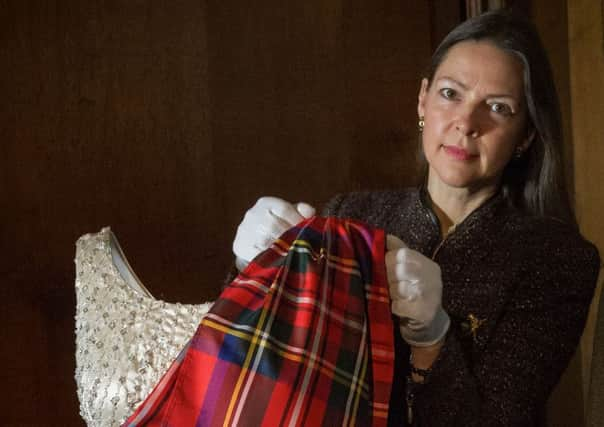

When was the last time you saw a photo of the Queen suffering a wardrobe malfunction? Never, that’s when, because it simply doesn’t happen. No hemlines flipping up or crazy hats flying off during a state visit. Visit Fashioning A Reign: 90 Years Of Style From The Queen’s Wardrobe, at the Palace of Holyroodhouse in Edinburgh this summer and you’ll discover why. It’s all in the meticulous detail that goes into the monarch’s outfits, from planning to execution to appearance, and each of the 25 outfits on display is testament to the work that goes into this by both designers and the Queen herself.
Outfits worn by the Queen over ten decades, from the 1920s to present day, have been chosen to give examples of royal couture, ceremonial and occasion wear. There are also the items she wore on visits to Scotland and examples of her enduring love of tartan.
Advertisement
Hide AdAdvertisement
Hide AdA roll call of designers represented includes Norman Hartnell, Hardy Amies, John Anderson, Ian Thomas, Edinburgh College of Art-trained Stewart Parvin, her current dresser Angela Kelly, and Sandra Murray, who created the Queen’s purple coat and green dress ensemble for the opening of the Scottish Parliament in 1999.
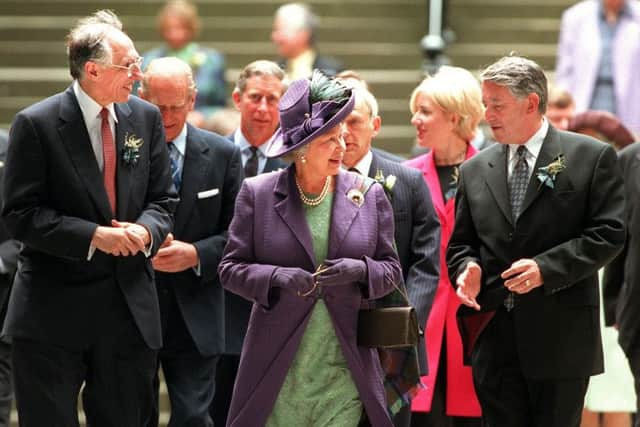

Of course, no royal outfit is complete without a hat and cases displaying some of the Queen’s eye-catching headwear from milliners Philip Somerville, Rachel Trevor-Morgan, Simone Mirman, Aage Thaarup, Marie O’Regan and Frederick Fox are a highlight.
“This exhibition covers 90 years of style from the Queen’s wardrobe,” says Caroline de Guitaut, senior curator of decorative arts at the Royal Collection Trust. “It covers memorable occasions in her life and our history through the medium of fashion. It’s an unprecedented display of pieces that have never been seen together before.
“The Queen’s clothes have to help her do her job which is to communicate as head of state. They have to be functional as well as visible. Just by her appearance she can communicate with her audience, say if it is embroidered with Californian poppies in California, or tartan in Scotland.
“Her clothes also have a diplomatic role. For example there’s a Norman Hartnell dress she wore in 1972 on a state visit to Thailand that has trim in yellow, which is used in the country’s highest order of chivalry, and there’s the Ian Thomas black silk and taffeta dress she wore to meet Pope John Paul II at the Vatican in 1980,” says De Guitaut.
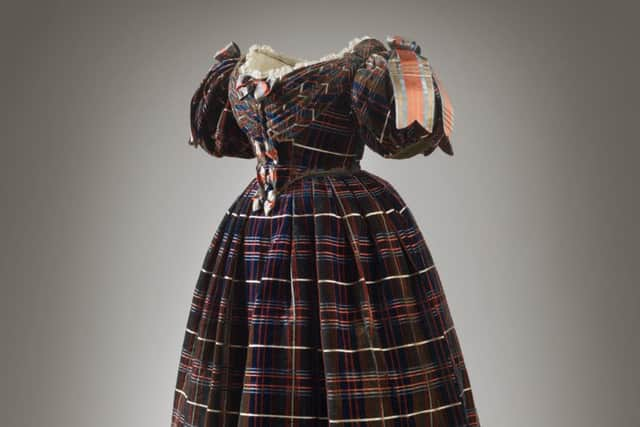

The Queen has long championed British design and the show includes big name couturiers like Hartnell and Amies, but there are also films showing the skilled craftspeople whose work goes into making everything from tweed to silk roses that are part of the monarch’s wardrobe.
Tartan and the royals’ love of Scotland is also highlighted in the display with a diminutive silk tartan dress that belonged to Queen Victoria and kilts in the Balmoral tartan which were designed by Victoria’s husband Prince Albert in 1853. There is also a Norman Hartnell evening dress with a Royal Stewart tartan sash, which is the Queen’s personal tartan and worn every year at the Ghillies Ball at Balmoral.
Advertisement
Hide AdAdvertisement
Hide AdBeing ahead of fashion has never been what the Queen was about but she’s certainly aware of it and her evolving style can be traced in the display with embroidered crinolines from the mid to late 1960s giving way to simpler silhouettes in the 1960s and 1970s and brighter colours.
“The simple column-style dresses she started wearing then are still her style today,” says De Guitaut, who credits the monarch with the probable invention of colour blocking.
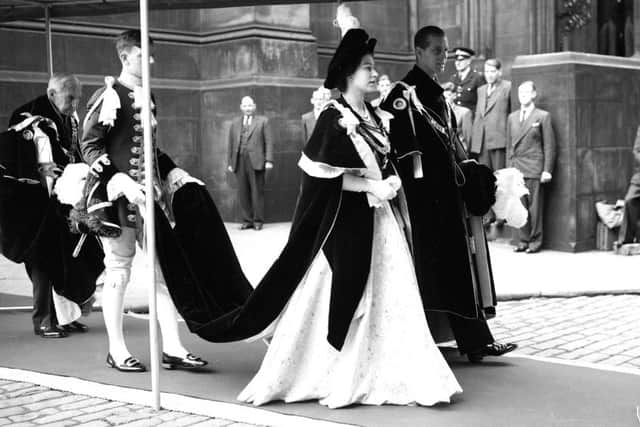

“Her dress reflects what is going on during the different eras, rather than being at the forefront. Her role is to transcend fashion but she is always wearing dresses by leading designers.”
Visibility being key to public appearances, the Queen has always been seen in a dizzying array of colours from daffodil yellow, through kingfisher blue to fuchsia.
“People want to be able to spot her in a crowd, which is why a hat is important and she has tended to be daring with her choice of millinery. They are bright and in unusual fabrics and shapes, often brimless so you can see her face. She is also being looked at from all angles, so her clothes have to be as beautiful from the back as the front.”
Colour can also be dictated by the occasion, such as the official opening of the Scottish parliament in 1999. Designer Sandra Murray says: “She looks good in all colours but this outfit had to be Scottish and the colours of the thistle were as Scottish as I could get. So I went for a purple coat and green dress, with a paisley pattern on it.”
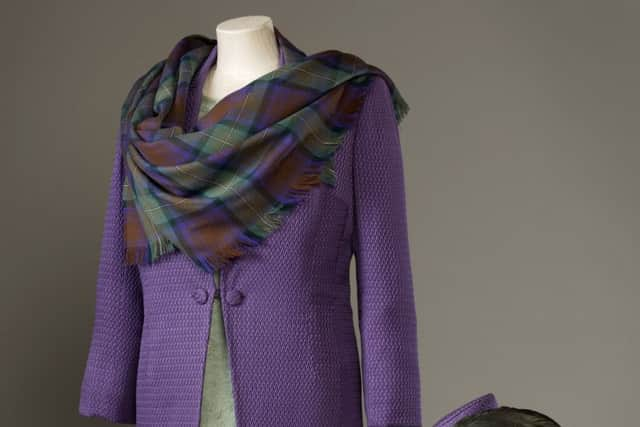

Did the Queen approve of her design? “Well, when she tried on the finished outfit she looked at herself in the mirror and said ‘Splendid’,” says Murray.
• Fashioning A Reign: 90 Years Of Style From The Queen’s Wardrobe at the Palace of Holyroodhouse, Edinburgh, until 16 October, www.royalcollection.org.uk